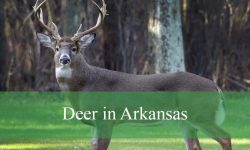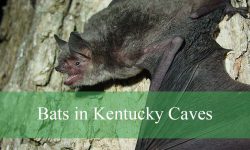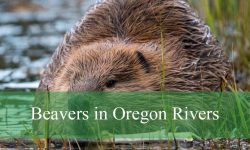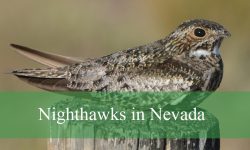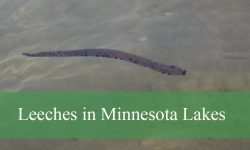Wyoming’s wide-open plains, sagebrush flats, and mountainous regions are home to a variety of wild rabbits and hares. These animals are an integral part of the state’s ecosystems, serving as prey for predators and influencing vegetation patterns. Observing them offers a closer look at their behavior and survival strategies.
The state hosts several notable species, including cottontails like the Eastern and Desert Cottontail, as well as larger hares such as the White-tailed and Black-tailed Jackrabbit. Each species has unique adaptations, from fur color to habitat preferences, allowing them to thrive across Wyoming’s diverse environments.
Wildlife enthusiasts and photographers can enjoy spotting these rabbits throughout the year. Understanding their habits, preferred habitats, and peak activity times makes it easier to watch them in the wild and appreciate their role in nature.
Different Types of Wild Rabbits Found in Wyoming
Eastern Cottontail (Sylvilagus floridanus)
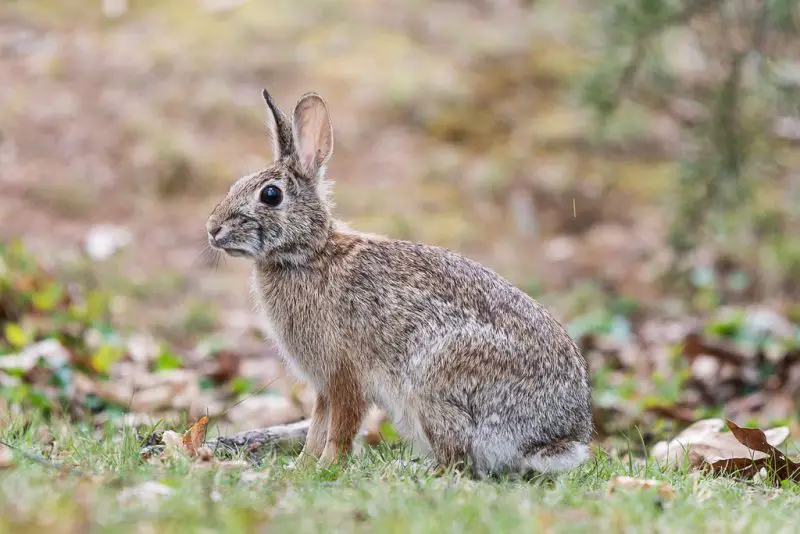
The Eastern Cottontail is one of the most common rabbits in eastern and central Wyoming. They have a brownish-gray coat with a white belly and a distinctive fluffy white tail, which gives them their name. Adults typically measure 16–18 inches long and weigh between 1.8–3.3 pounds. This species adapts well to edge habitats such as fields, brushy areas, and forest borders.
Eastern Cottontails are mostly crepuscular, meaning they are active during dawn and dusk, but they can occasionally be seen during the day, especially in cooler weather. They have keen hearing and sense of smell, which help them detect predators such as foxes, hawks, and snakes. When threatened, they escape using rapid zig-zag movements to confuse predators.
Their diet primarily consists of grasses, clover, herbs, and leafy weeds in the summer, while in winter they feed on twigs, bark, and buds of shrubs and small trees. Eastern Cottontails play a key role in the ecosystem by serving as prey for many predators and by influencing plant communities through their feeding habits.
Breeding occurs from early spring to late summer, and females can have multiple litters per year, usually 3–8 kits per litter. Nests are shallow depressions lined with grass and fur, hidden in dense vegetation for protection. Kits are born blind and hairless, relying entirely on their mother for warmth and nourishment.
Eastern Cottontails are highly territorial but show tolerance toward other rabbits in overlapping ranges. Despite being abundant, they face challenges from habitat loss, extreme weather, and hunting. Conservation of brushy and open habitats helps maintain healthy populations in Wyoming.
Desert Cottontail (Sylvilagus audubonii)
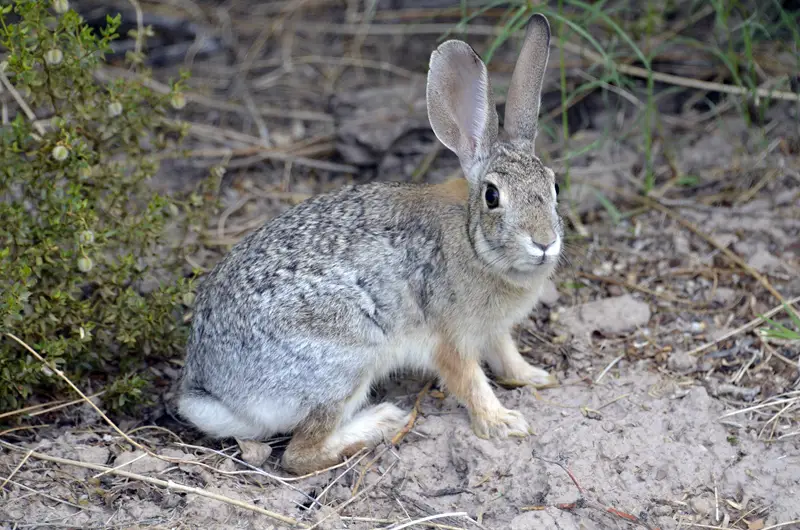
The Desert Cottontail is a medium-sized rabbit adapted to arid regions and open landscapes in southwestern Wyoming. They have a light brown to grayish coat that blends with sandy soils and sparse vegetation, and their white belly and tail are less conspicuous than the Eastern Cottontail. Adults typically measure 14–16 inches long and weigh 1.5–3 pounds. This species thrives in sagebrush, desert grasslands, and rocky areas.
Desert Cottontails are primarily crepuscular, active at dawn and dusk to avoid extreme daytime temperatures. They rely on their sharp senses of sight, hearing, and smell to detect predators such as coyotes, raptors, and snakes. When fleeing danger, they use rapid, zig-zag running and can cover impressive distances in a single leap.
Their diet consists mainly of grasses, herbs, and succulent plants, supplemented by twigs and bark during winter months. Water is scarce in their habitats, so they obtain most moisture from the plants they consume. They play an important role in their ecosystems by dispersing seeds and serving as prey for local predators.
Breeding occurs from February through September, and females may produce multiple litters per year, each containing 2–7 kits. Nests are shallow depressions lined with vegetation and fur, often hidden under shrubs or rocks to protect the young. Kits are born blind, deaf, and hairless, remaining in the nest for several weeks before venturing out.
Desert Cottontails are solitary but may share feeding areas with others. Human activity, habitat degradation, and harsh winters can impact local populations. Conservation efforts that protect sagebrush habitats are essential for sustaining this species in Wyoming.
Mountain Cottontail (Sylvilagus nuttallii)
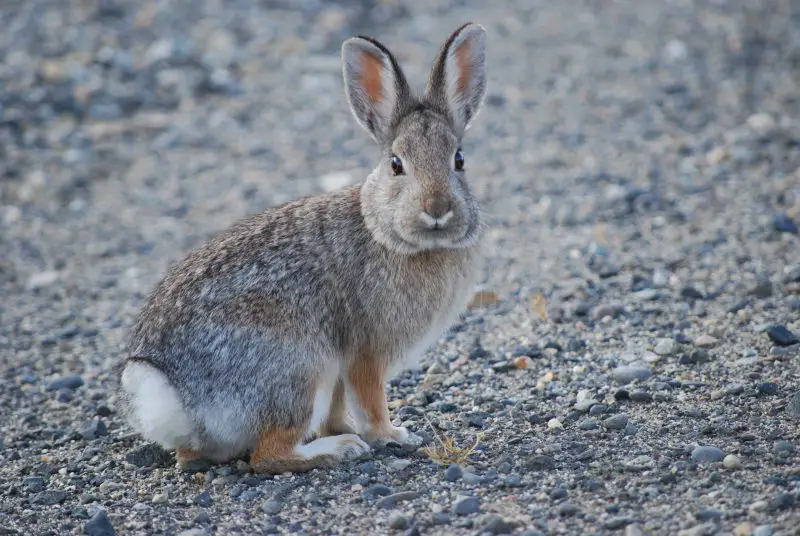
The Mountain Cottontail is a small, agile rabbit found in the foothills and mountainous regions of Wyoming. Their fur is a mix of gray, brown, and white, which provides excellent camouflage among rocks and shrubs. Adults usually measure 14–16 inches long and weigh 1.5–2.5 pounds. This species prefers rocky slopes, shrublands, and open forests where cover is plentiful.
Mountain Cottontails are most active at dawn and dusk. They rely on keen hearing and vision to avoid predators, including bobcats, hawks, and foxes. Their flight response involves rapid, erratic movements that help them escape through rocky terrain and dense shrubs.
They feed on grasses, shrubs, leaves, and bark, depending on seasonal availability. In winter, they may rely heavily on twigs and buds of shrubs. Their foraging activities help shape local vegetation patterns and provide food for higher predators.
Reproduction takes place from early spring to late summer. Females can have several litters per year, usually 2–6 young per litter. Nests are carefully concealed with vegetation, and kits remain hidden and dependent on the mother for warmth and nourishment until they are old enough to explore their surroundings.
Mountain Cottontails are generally solitary but may be seen in loose groups during feeding. Habitat loss, harsh winters, and predation affect their numbers. Preserving rocky slopes and shrub-covered areas is important for the survival of this species in Wyoming.
White-tailed Jackrabbit (Lepus townsendii)
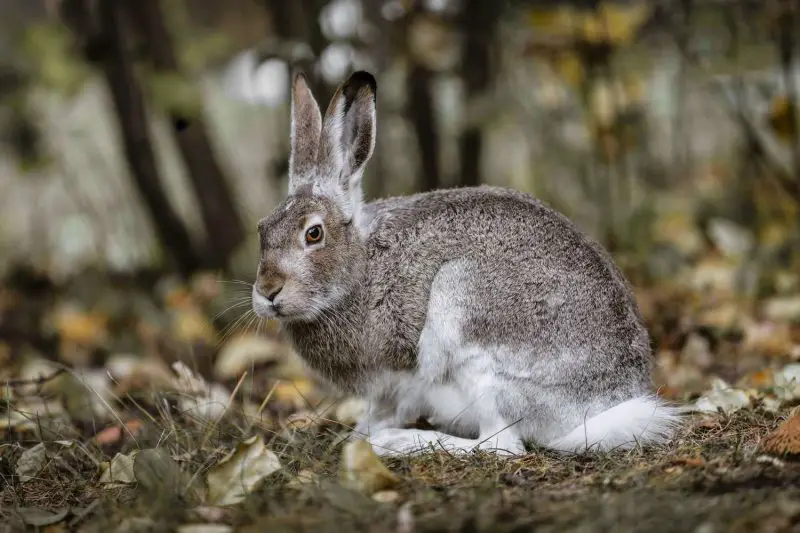
The White-tailed Jackrabbit is one of the largest hares in Wyoming, well-adapted to open plains, prairies, and high-altitude grasslands. They have long ears, powerful hind legs, and a striking white tail. Their coat is brownish-gray in summer and turns almost entirely white in winter to provide camouflage in snow. Adults can grow 20–26 inches long and weigh 3–6 pounds.
White-tailed Jackrabbits are mainly nocturnal but can also be active during daylight hours in cooler temperatures. They rely on their excellent vision, hearing, and speed to evade predators such as coyotes, eagles, and bobcats. They are capable of running at speeds over 35 mph, making them extremely difficult to catch.
Their diet consists of grasses, shrubs, and woody plants, with winter months requiring more reliance on twigs and bark. They play a critical ecological role by controlling vegetation growth and providing prey for numerous predators.
Breeding occurs in early spring through summer, with multiple litters of 2–5 leverets (young hares) per year. Unlike cottontail rabbits, leverets are born fully furred, with open eyes, and are able to move shortly after birth, giving them a higher survival rate in open habitats.
White-tailed Jackrabbits are solitary and highly territorial. Harsh winters, habitat encroachment, and predation can influence their population numbers. Maintaining open grasslands and prairie habitats is crucial for their continued presence in Wyoming.
Black-tailed Jackrabbit (Lepus californicus)
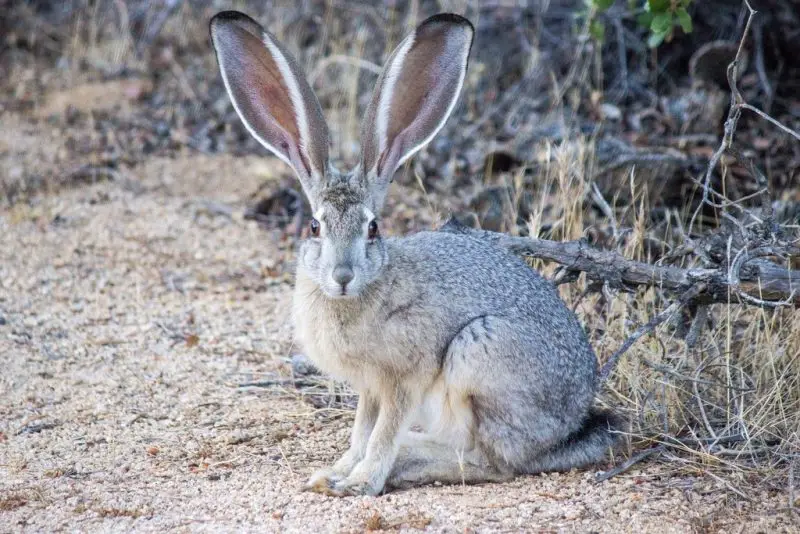
The Black-tailed Jackrabbit is a large hare common in the dry sagebrush plains and desert grasslands of Wyoming. It has a long, lean body with strong hind legs, large ears, and a characteristic black-tipped tail. Summer fur is grayish-brown, while the winter coat may lighten slightly but generally retains its darker tone. Adults are 20–24 inches long and weigh 3–5 pounds.
Black-tailed Jackrabbits are primarily crepuscular and nocturnal, using their exceptional speed and agility to escape predators such as coyotes, hawks, and foxes. They can leap up to 10 feet in a single bound and run at high speeds, often in zig-zag patterns to evade capture.
Their diet mainly consists of grasses, sagebrush, and desert shrubs. In winter, they eat twigs, bark, and dried plant material. By feeding on vegetation, they help shape plant communities and serve as prey for a variety of carnivores.
Breeding occurs from February to August, with females producing multiple litters of 2–6 young each year. Leverets are born fully furred and with open eyes, ready to move within hours of birth. Nesting is usually in shallow depressions lined with fur and plant material, hidden under shrubs for protection.
Black-tailed Jackrabbits are mostly solitary but may gather in loose groups in areas with abundant food. Their populations are influenced by weather extremes, predation, and habitat loss. Protecting sagebrush ecosystems is key to sustaining healthy populations of this species in Wyoming.
Comparison of Wild Rabbit Species in Wyoming
Species |
Size (Length / Weight) |
Habitat |
Diet |
Activity Pattern |
|---|---|---|---|---|
Eastern Cottontail (Sylvilagus floridanus) |
16–18 in / 1.8–3.3 lbs |
Fields, brushy areas, forest edges |
Grasses, clover, herbs, twigs, bark |
Crepuscular, sometimes daytime |
Desert Cottontail (Sylvilagus audubonii) |
14–16 in / 1.5–3 lbs |
Sagebrush, desert grasslands, rocky areas |
Grasses, herbs, succulents, twigs, bark |
Crepuscular |
Mountain Cottontail (Sylvilagus nuttallii) |
14–16 in / 1.5–2.5 lbs |
Foothills, rocky slopes, shrublands, open forests |
Grasses, shrubs, leaves, bark |
Crepuscular |
White-tailed Jackrabbit (Lepus townsendii) |
20–26 in / 3–6 lbs |
Open plains, high-altitude grasslands |
Grasses, shrubs, woody plants |
Nocturnal and crepuscular, sometimes day |
Black-tailed Jackrabbit (Lepus californicus) |
20–24 in / 3–5 lbs |
Sagebrush plains, desert grasslands |
Grasses, sagebrush, desert shrubs, twigs, bark |
Nocturnal and crepuscular |
Best Time and Places to Observe Wild Rabbits in Wyoming
Best Time to Observe
Wild rabbits in Wyoming are generally most active at dawn and dusk, making early morning and late evening the ideal times for observation. During these hours, light levels are low, and rabbits emerge from their hiding spots to forage. In winter, you may spot white-tailed and black-tailed jackrabbits more easily in open areas because of their contrasting coat against the snow. Spring and summer are also excellent for observing young rabbits learning to forage and interact with their environment.
Best Places to Observe
Eastern and Desert Cottontails are often found near brushy edges, meadows, and sagebrush plains where vegetation provides cover and food. Mountain Cottontails prefer foothills, rocky slopes, and shrublands, while jackrabbits favor open prairies, grasslands, and desert flats. Wildlife refuges, national forests, and state parks such as Medicine Bow National Forest or Wyoming’s prairie preserves provide ideal habitats for spotting these species. Walking slowly along trails or quietly sitting near feeding areas will increase your chances of observation.
Observation Tips
Stay quiet and move slowly to avoid startling the rabbits. Binoculars or spotting scopes can help you see them from a distance. Look for tracks, droppings, or chewed vegetation as signs of recent activity. Be patient, as rabbits may remain hidden for long periods, especially during hot days or high predator activity.
FAQs about Wild Rabbits in Wyoming
What is the difference between cottontails and jackrabbits?
Cottontails are smaller, have shorter ears, and are more likely to inhabit brushy and forested edges. Jackrabbits are larger, with longer ears and legs, adapted to open plains and grasslands. They also change coat color seasonally to blend with their environment.
Are wild rabbits dangerous to humans?
Wild rabbits are generally not dangerous to humans. They may carry parasites such as fleas or ticks, so avoid handling them. Observing from a distance is safest for both you and the rabbits.
When is the best time of year to see rabbit kits or leverets?
Rabbit breeding occurs mainly from spring through late summer. During this period, you may observe young cottontails (kits) and jackrabbits (leverets) learning to forage near their nesting sites.
What should I bring for rabbit observation?
Bring binoculars, comfortable clothing, and sturdy shoes. It’s helpful to have a notebook to record sightings. Observing quietly without sudden movements is key to spotting rabbits in their natural habitats.
Can rabbits be seen in winter in Wyoming?
Yes, especially jackrabbits. Their seasonal coats help them remain visible against snow in open grasslands. Cottontails may be harder to spot in winter since they often shelter in dense brush.

